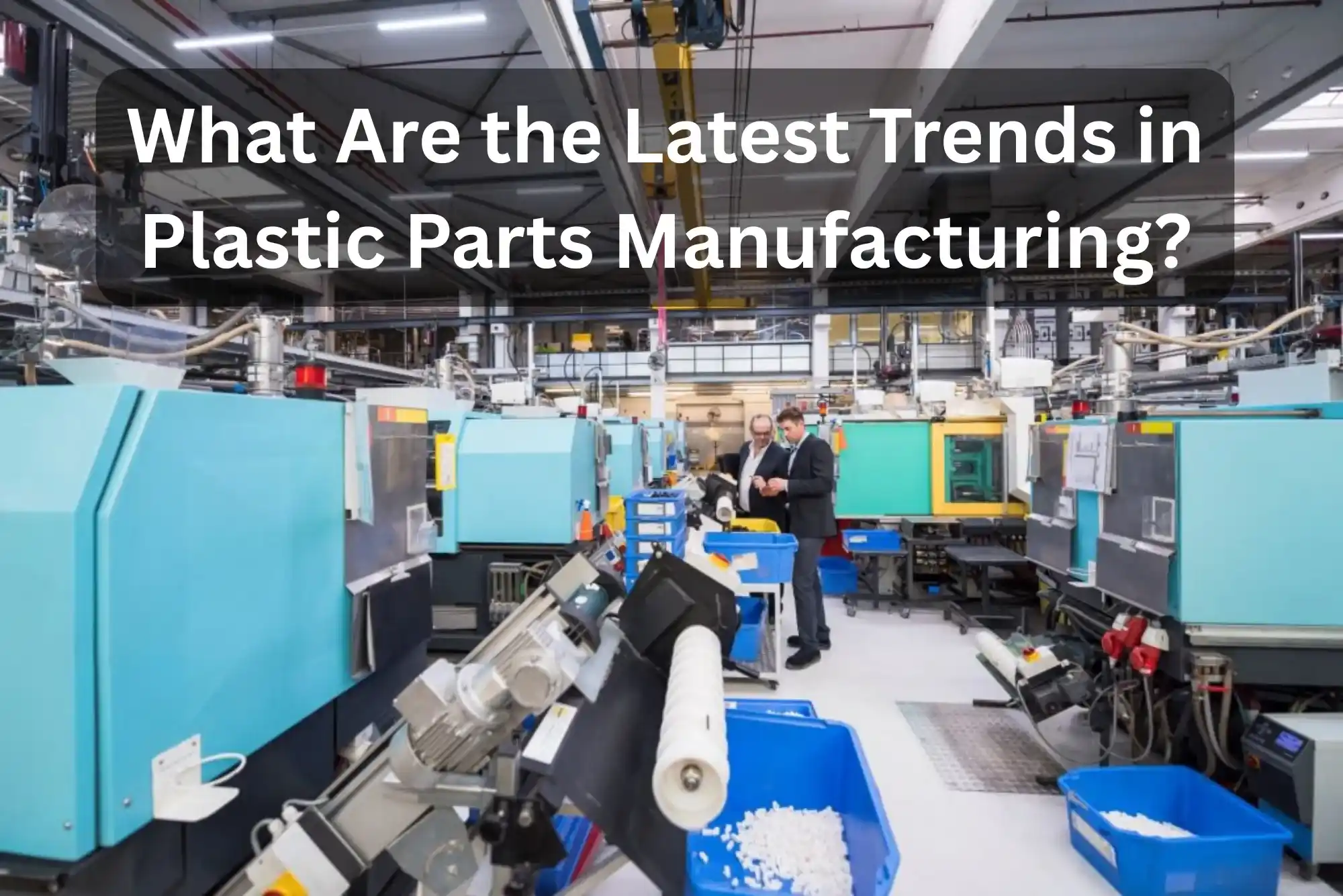Plastic parts manufacturing has undergone a remarkable transformation in recent years, driven by advances in technology, sustainability initiatives, and the growing demand for high-quality, precision-engineered components. Whether you are working closely with plastic parts manufacturers or sourcing injection molding parts suppliers, it’s essential to stay informed about the latest trends shaping this dynamic industry. In today’s globalized and competitive market, companies that embrace innovation in materials, production techniques, and design efficiency are the ones setting new standards.
As someone who has followed this industry closely and interacted with both manufacturers and suppliers, I can say the pace of change is faster than ever before. Below, I’ll explore the most important trends that are redefining how plastic parts are designed, produced, and delivered.
Sustainability as a Core Manufacturing Strategy
One of the strongest shifts in recent years has been toward sustainable production. Plastic parts manufacturers are under increasing pressure to minimize their environmental footprint. This has led to a rapid expansion of bioplastics, recycled plastics, and closed-loop systems. Unlike a decade ago, when recycled materials often had inconsistent performance, today’s recycled resins are engineered to perform nearly on par with virgin plastics.
Injection molding parts suppliers are also embracing eco-friendly practices, offering parts that comply with regulatory standards for waste reduction and carbon efficiency. Clients across industries—from automotive to consumer electronics—are now asking suppliers about green credentials before placing orders. Sustainability has gone from a “nice-to-have” to a “must-have” in the manufacturing process.
Precision Engineering Through Digitalization
Digital transformation is another major driver. The rise of Industry 4.0 technologies has changed how factories operate, giving plastic parts manufacturers real-time visibility into production quality, material usage, and efficiency. Advanced sensors and IoT devices allow automated machines to detect and correct errors instantly, reducing waste and improving consistency.
Injection molding parts suppliers, for example, use digital twins to simulate how a mold will perform before it is even manufactured. This reduces costly trial-and-error runs and speeds up production. Clients benefit from parts with tighter tolerances and faster delivery timelines, making digitalization an undeniable advantage for both manufacturers and customers.
Advanced Injection Molding Techniques
Injection molding remains the backbone of plastic parts manufacturing, but the process itself has evolved significantly. Modern machines can handle more complex geometries, thinner walls, and high-performance engineering plastics. Multi-shot and overmolding techniques are increasingly common, allowing for the production of parts that combine different materials or colors in a single mold.
This trend is particularly visible among top injection molding parts suppliers who specialize in automotive interiors, medical devices, and consumer products. By offering innovative molding capabilities, suppliers are not just selling parts—they are delivering solutions that give clients a competitive edge in design and performance.
Customization and Low-Volume Production
In the past, plastic manufacturing was almost entirely focused on mass production. Today, however, companies are looking for flexibility. Businesses want custom solutions in smaller quantities without sacrificing quality or efficiency. Plastic parts manufacturers are responding by investing in modular tooling and hybrid production systems.
For example, a startup developing a new consumer gadget may not need millions of units at first. Instead, they turn to injection molding parts suppliers who can provide smaller runs with rapid turnaround. The rise of customized, low-volume manufacturing makes it easier for new businesses to innovate without being held back by traditional high-cost, high-volume models.
Integration of 3D Printing with Traditional Processes
Another major trend is the blending of additive manufacturing with traditional injection molding. 3D printing is not replacing molds entirely, but it is being used in prototyping, tool creation, and even small-batch production. This hybrid approach allows plastic parts manufacturers to experiment quickly and refine designs before committing to mass production.
Injection molding parts suppliers are also adopting 3D printing for rapid prototyping, enabling them to show clients functional models within days rather than weeks. This speeds up decision-making and reduces risks in product development. Over time, we’re likely to see even deeper integration between these two methods.
Demand for High-Performance Materials
With industries like aerospace, medical technology, and electric vehicles growing rapidly, the demand for high-performance plastic materials is at an all-time high. Manufacturers are no longer limited to basic polymers; they now work with composites, reinforced plastics, and heat-resistant resins that rival metals in strength and durability.
Plastic parts manufacturers have invested heavily in research to provide materials that meet stringent industry standards while remaining cost-effective. Injection molding parts suppliers play a critical role in bringing these materials to market, offering clients access to specialized parts that can withstand extreme conditions without compromising weight or cost efficiency.
Globalization and Supply Chain Shifts
The global supply chain disruptions of recent years have reshaped how manufacturers and suppliers operate. Many companies that relied on offshore production are now exploring local partnerships to reduce risks and ensure continuity. Plastic parts manufacturers are opening regional facilities or collaborating with local injection molding parts suppliers to stay closer to their customers.
This localization trend benefits clients as well. It reduces lead times, minimizes shipping costs, and offers better communication throughout the production process. It also provides resilience against geopolitical or logistical challenges that might otherwise disrupt operations.
The Role of Automation and Robotics
Automation is not new in manufacturing, but its scope has expanded dramatically. Robotics now handle complex tasks such as part trimming, quality inspection, and even packaging. This has boosted efficiency, reduced labor costs, and ensured greater consistency across large production runs.
Plastic parts manufacturers using advanced robotics report fewer errors and higher throughput, while injection molding parts suppliers gain the ability to scale operations without compromising quality. The result is faster deliveries and improved pricing models for customers who demand reliability and speed.
Final Thoughts: A New Era for Plastic Parts
The landscape of plastic parts manufacturing is being reshaped by innovation, sustainability, and customer demand for flexibility. Plastic parts manufacturers are no longer just producers—they are strategic partners offering customized, sustainable, and high-performance solutions. Similarly, injection molding parts suppliers are evolving from traditional suppliers into full-service providers with digital capabilities, global reach, and advanced technical expertise.
For businesses looking to source plastic parts today, the choice of manufacturer or supplier can directly impact product quality, time-to-market, and long-term competitiveness. The future belongs to those who embrace these trends and adapt quickly, making this an exciting time to watch and participate in the evolution of this vital industry.





